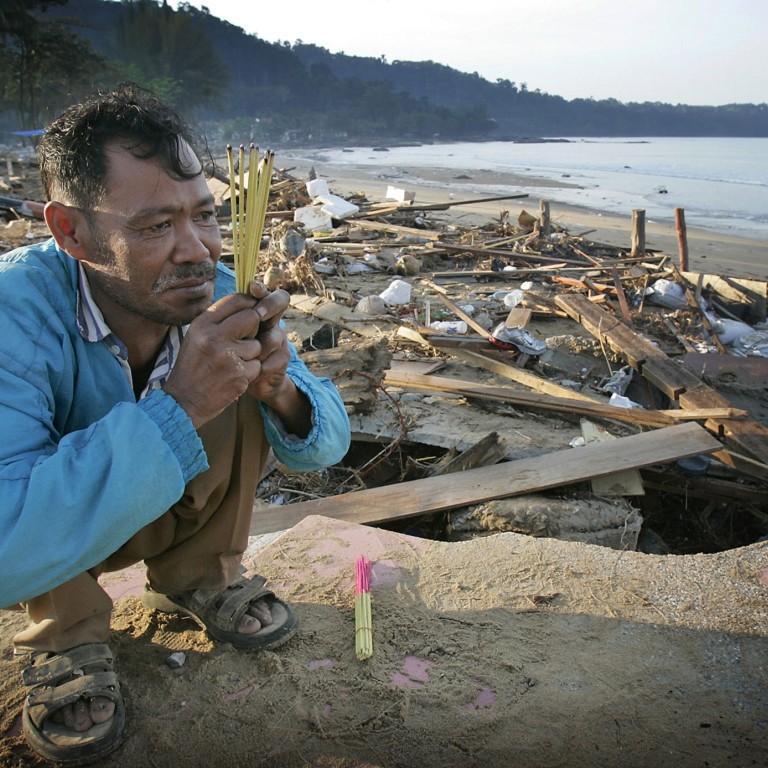
10 years after the Indian Ocean tsunami, is Asia better prepared for a disaster?
Shamshad Akhtar says progress has been impressive but more must be done at a local level
On December 26, 2004, the world experienced one of the deadliest natural disasters ever recorded. A 9.1 magnitude earthquake off the west coast of Sumatra, Indonesia, triggered a massive tsunami that directly affected 14 countries in Asia and Africa, leading to 230,000 deaths and massive human suffering.
Ten years later, we commemorate the loss of those who fell victims to the wrath of nature. This month, several affected countries will host remembrance ceremonies for the Indian Ocean tsunami. This is an opportunity to raise public awareness in the Asia-Pacific region and beyond on the importance of building greater resilience to natural disasters.
A key lesson from the tragedy was the importance of early warning. When the wave struck, early warning systems were inadequate. Many received no warning before they saw the wall of water. Our region must never again be caught so unprepared.
In the aftermath, the Asia-Pacific region embarked on a collective effort to develop approaches and mechanisms for better early warning systems. Asia and the Pacific is the most disaster-prone region in the world. Building resilience here is not an option but an imperative to safeguard lives and livelihoods.
The Hyogo Framework for Action was adopted in Kobe, Japan, weeks after the disaster.
Real progress has been made in implementing the framework. Governance has been strengthened, with more than half of Asia-Pacific countries having enacted legislation and created institutions dealing specifically with disaster risk management.
The budgetary allocations for disaster risk and mitigation works have been improved - although this varies across countries. Institutional capacities for early warning, preparedness and response have also been strengthened, but more must be done.
The countries of Asia and the Pacific are redoubling efforts to reinforce implementation capacities, educate vulnerable communities and address underlying risks.
In 2011, the Indian Ocean Tsunami Warning and Mitigation Systems became operational, with Australia, Indonesia and India in charge of issuing tsunami bulletins. The United Nations Economic and Social Commission for Asia and the Pacific (Escap) projects that this new system will save an average of 1,000 lives each year for the next 100 years.
On April 11, 2012, an 8.6 magnitude earthquake off Indonesia was a useful test of the new warning system. Within 10 minutes of the quake, the countries at risk had received bulletins with tsunami warning information from the three regional service providers. Millions of people were warned and moved to higher ground. No tsunami came but the experience suggests real progress has been made.
At the national level, several countries have also made major investments in early warning systems, including setting up state-of-the-art warning centres, which have contributed to the Asia-Pacific region increasingly being considered a global hub for excellence in this field.
The tsunami also led to the creation of innovative funding mechanisms. Thanks to Thailand's contribution of US$10 million, the Escap Trust Fund for Tsunami, Disaster and Climate Preparedness was launched in 2005. Pooling resources from multiple donors to strengthen multi-hazard early warning systems, the fund has supported 26 projects benefitting 19 Indian Ocean and Southeast Asian countries.
The fund supported the establishment of 2011's warning system, and has provided targeted support to countries facing high risks, but with limited national capacity.
We must not forget the importance of local level, community-based risk reduction. This "last mile" of early warning systems - the vulnerable communities at risk - remains a critical gap in need of additional attention and resources. It must be a high priority to ensure that the most vulnerable communities receive timely and understandable warnings.
So how much better prepared is the region now for a major tsunami? Considerably better than in 2004, but the full answer can only be known during the next tsunami.
Working together to reduce disaster risk and build resilience is comparable to pushing a big rock uphill together - if we do not constantly move forward, we risk sliding backwards. It involves developing a culture of preparedness and cooperation across the region, and shifting from a focus on response to a greater emphasis on prevention.
In June this year, Thailand hosted the 6th Asian Ministerial Conference on Disaster Risk Reduction to consolidate the regional voice for a successor to the Hyogo Framework for Action agreement. As countries from around the world prepare to meet in Sendai, Japan, in March 2015, the Asia-Pacific region will bring our essential lessons and experiences to help shape this new global framework.
